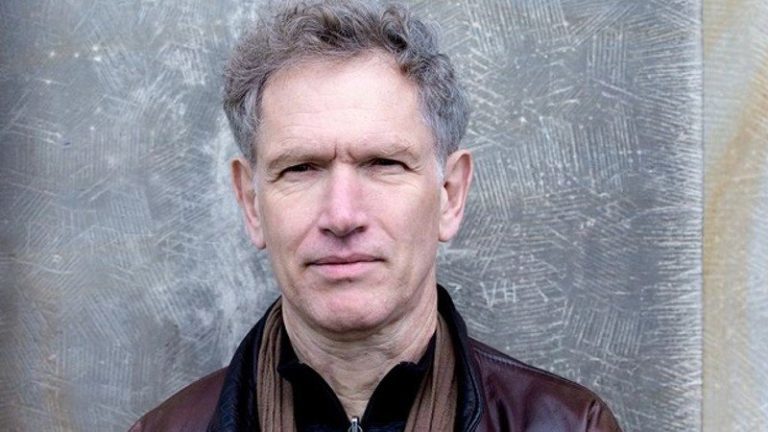Since he wrote Winternacht in 1978, the reference to snow has gradually become a constant in the music of Hans Abrahamsen (Copenhagen, *1952). “It captures me”, he says. “What fascinates me about snow is its whiteness, as well as the idea that it can turn to ice”. But Abrahamsen is also very aware of “the other side of winter”, he clarifies, which is that “after winter comes spring”. That is precisely what happens at the end of Winternacht, but also at the end of his opera The Snow Queen (2019), whose production and subsequent DVD release, in its English version, by the Bayerische Staatsoper has just been awarded at the ICMA 2023. With this in mind, Jesús Castañer from ICMA’S Jury member Scherzo shared a warm conversation about his opera and some of his more recent creative interests.
– You have written your first opera, The Snow Queen (2019), at the age of 62. Did you think about making an opera before?
– Yes. I had plans to write an opera in 1988, but I never managed to find the right story, and also I hadn’t developed a vocal writing of my own to do something like that. It was when I was composing Schnee, between 2006 and 2008, that I read Hans Christian Andersen’s fairytale Snedronningen (The Snow Queen), and I immediately saw the possibilities of that story. I was very moved by it. I even wrote a libretto myself, but it didn’t work out, and in fact I don’t think I ever told anyone about it. But some of the ideas in Schnee were inspired by this tale. Take for instance the second canon, which in the opera appears in the scene where Kay and Gerda are in a town square and he is showing her how fantastic the snowflakes are, and then they go round while the other children are playing with the snow. When I wrote this music for Schnee, I already had this image in my head. Naturally, when the Royal Opera asked me in 2012 if I was interested in writing an opera, I quickly said: “Yes, The Snow Queen”.
– In fact, the connection between The Snow Queen and Schnee is so strong that at certain moments one can get the feeling that the former is somehow contained in the latter. For example, Schnee’s first canon appears in the opera’s Prelude and reappears near the end, when Gerda is with Kay in the castle and doesn’t know how to wake him up. But whereas in the Prelude the ‘answer’ was at the beginning of the phrase, in this other scene it is at the end. Just as in Schnee. It is then that a tear falls from Gerda’s eye; that is, the ‘answer’ is finally found.
– That’s an interesting point. I had never thought about it. Indeed, in Schnee I work with two sentences that run canonically: first comes the ‘answer’ and then comes the ‘question’, and at the end of each canon this order is reversed. That is, at the beginning we already have the answer, but first we have to embark on a journey to find the question. And only when we have the question, at the end, we realize that the answer was inside us all along, we just weren’t aware of it. Sometimes we have the answers, but we can’t believe they are so simple.
– From what you are saying, I have the feeling that The Snow Queen might have a significant autobiographical component. I remember that in an interview you did for the New York Times a few years ago you said that in the 1990s you were ‘paralyzed’ by the ‘white paper’, and that you felt you could no longer create or say anything.
– What I can say is that I understand Kay very well. And I understand why he is captured by the Snow Queen. When you’re looking for something artistically, sometimes you’re very much in your mind, working and thinking very rationally and intellectually, very ‘coldly’, and that can lead to a kind of freezing. But then something intuitive, even accidental happens, and that’s how you come out of it. I can definitely see the parallels with my career as a composer in that at a certain point Gerda comes looking for Kay and together they find the word ‘eternity…
– Who was your Gerda?
– My Gerda? That was my wife (laughs). She was the one who got me to start composing again. It was also my wife who suggested that I read The Snow Queen when I was writing Schnee (…). However, probably the most important thing to understand about the story is that Kay is different afterwards. It’s all about growing up. When I started writing again, my music sounded very simple and austere, but at the same time it was much more complex than anything I had done before. That’s why it was very positive for me to put that ‘fermata’ in my life. It made me go in new directions. Perhaps it was a lot of dogmas about how one should write new music that I gave up. Maybe that was my way out of the freeze. By the late 1980s and early 1990s I had practically forgotten my language.
– Like Kay, you were ‘muted’ by the Snow Queen…
– Yes, but that’s precisely why I think the Snow Queen is a good character in the opera. I find it very touching that she really wants Kay to find the answer. “Give me the word”, she says to him. Her figure is very important to both Kay and Gerda; otherwise, they would have remained children. They were coming out of paradise at the beginning. Knowledge is in the words.
– Why cast a bass for the role rather than –what would probably have been the more predictable choice– a coloratura soprano?
– That was Barbara Hannigan’s idea. Originally, she was going to play Gerda’s role also in the premiere of the Danish version of the opera in Copenhagen, but soon she realized that she couldn’t do it because of the language. Then she said to me: „Why not a bass?” We had been talking before about Mozart’s Die Zauberflöte, and we agreed that the Snow Queen is not like the Queen of the Night, but more like Sarastro, who gives Papageno and Papagena the wisdom. So choosing a bass, like Sarastro, seemed like a very good idea. But there’s also another very important thing going on in the opera, and that is that some of the characters are deeply interconnected. It is the Snow Queen who kidnaps Kay in the first act, and then it is that same person, as a reindeer, who brings Gerda to the ice castle where her friend is trapped. And at the end of the opera the Snow Queen is the Time. The same is true of the Grandmother: she is the first to tell Gerda and Kay about the Snow Queen, and it is also her, as the Old Woman, who steals Gerda’s memory later. And so it is with the two Crows, with the Prince and the Princess, and so on. Even Kay and Gerda can be considered two divisions of the same person.
– This sort of interconnectivity is also very characteristic of your instrumental music. You are constantly writing on top of your old pieces; rewriting the same music all the time. What do you find attractive about it?
– I think the reason I do it is because I often feel that I need to go deeper and deeper into a piece. When you write something for the first time, you do it in a certain way, but when you rework it in another context, somehow you discover structures and possibilities of expression that you were not aware of before. Even if the tempo is slower or faster the music can become absolutely different. But this is something that many other composers have done. Bach, for example, reworked many of his pieces in different ways.
– Yes, but what I mean is that you connect your pieces not only in terms of material, but also narratively.
– Ah, yes, of course! In fact, in The Snow Queen there are some things that are totally linked to when I was very young. For example, there’s this song… (starts singing a melody).
– That’s the melody that Gerda sings at the beginning, as she tells the story of the ‘bad troll’, isn’t it?
– That’s right. That melody comes from a choral piece I wrote when I was 18, called ‘The song about us, the forest and the troll’ (1971), which is also about an evil troll who is cooking some herbs in a big cauldron. At one point, this cauldron explodes, the troll disappears, and all the animals in the forest are happy again. I did the text myself at the time (laughs). It is all very naive and simple. But obviously it is intimately related to the story Gerda tells at the beginning of the opera.
– I think that another characteristic aspect of the music you’ve been writing in recent decades might be the increasing importance you’ve been giving to melody. Do you agree?
– Well, I think that at least two things are happening in my music since my creative hiatus. On one hand, I would say that I have allowed myself the possibility of being aware of phrases, and how tempo and time – which are two very important things for me – play a fundamental role in them. Actually, I think maybe melody is just that, in a way: the feeling for phrases. On the other hand, there is expression. When I was young, I liked to show things without feelings. I would never write a rubato, for example. In the 1980s I started writing fermatas – I even wrote a ritardando in Lied in Fall (1987) –, but still. However, the truth is that I was able to perceive some kind of latent expressiveness in my music, especially in Winternacht (1978). What I have been looking for in my recent music, if you look closely, is to combine these two opposites: the cold and the warm. When we talk about The Snow Queen we talk about something cold and warm at the same time.
– That’s true. I see it, for example, in the way sometimes you make your music fluctuate between two tempos that are almost the same. As you do at the beginning of the second act of the opera, for example.
– Exactly. That way the tempo is very precise, but at the same time it’s alive. It’s as if the pulse were always ‘vibrating’. The first time I did this was in the first movement of Left, alone (2015), and since then it has become a regular feature in my music. Here I use it because Gerda arrives at the Old Woman’s place in a boat, so the tempo had to be ‘liquid’ in some way.
– There is also this descending motif in this passage, which also has something ‘watery’ about it…
– That material in the cellos is precisely the ‘water motif’, as we know it from Bach. Schubert also uses it in Auf dem Wasser zu singen. Here the cellos ‘descend’ in groups of two figures, but, since they are pegged to the bassoon melody, the phrase is progressively shortened, so that a certain sense of ‘ascent’ is created simultaneously. That is, on one hand, the cellos go faster and faster and the music becomes more and more ‘fluid’; on the other hand, the ‘water’ is clearly going down, but it is also going up, somehow. In addition, each desk has a different internal tempo; they only come together at the end. I think this all goes back, once again, to the time when I wrote Schnee. It was then that I realized something that ended up becoming a very important element of my music, which is this idea of creating processes in which there is something pointing one way, but gradually another force emerges describing a movement in the opposite direction, so that in the end, over time, things end up reversing.
– After writing your first opera, do you already feel any change in your instrumental writing?
– I do, actually. After The Snow Queen I wrote a Concerto for Horn and Orchestra (2019) and an orchestral piece called Vers le silence (2021), and in both pieces I can see that my approach to opera has influenced my way of composing instrumental music.
– In terms of drama, form…?
– In fact, maybe it’s something to do with melody. And perhaps also with the big form.
– This is the second time you’ve worked with Barbara Hannigan, isn’t it? If I’m not mistaken, the first one was with Let me tell you (2013)…
– Actually, this is the third. I met Barbara in 2008, when a very good mutual friend, Reinbert de Leeuw, programmed an adaptation I had done of Schönberg’s Lieder, op. 2 (arr. 1999) for soprano and ensemble, and she did the vocal part. After that, Barbara suggested doing something with Paul Griffiths’ novel Let me tell you. Now that I think about it, it’s very curios that we met through Schönberg’s music, since it could be a good example of that union of the warm and the cold that we were talking about before. And in fact Barbara is also a good example of this: she is very warm in the way she sings, but at the same time she is very precise. This balance is fantastic.
– Recently, when you were asked in an interview about The Snow Queen, you said: “I think I’m not finished with that. That music becomes storytelling and becomes emotions. I think still I have things to explore”. Are you already working on a new opera?
– Yes, I’m working on a new opera. It’s the only thing I’m writing right now. But I’m afraid I’m not sure how much I can tell you… Well, at least I can say that it’s for the Festival d’Aix-en-Provence, this festival being the lead commissioner.
– Will it have snow too?
– Hmm… Maybe (laughs).











